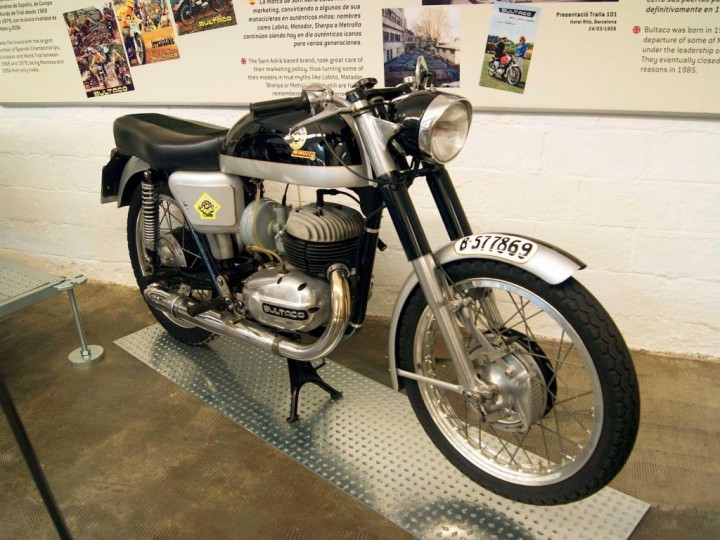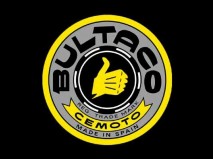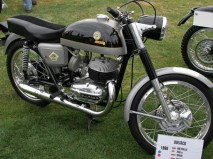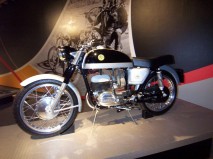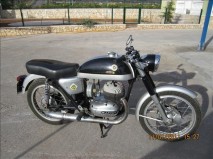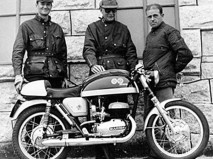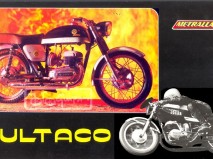1966 Bultaco Metralla Mk2 250
St.Adria de Besos (Barcelona)
Familia Gonzalez Vigano
Reg.N - B-577869
Engine type: Two-stroke
Number of cylinders: 1
Engine capacity: 244 cc
Cooling: air
Compression ratio: 8.5: 1
Bore x Stroke: 72 x 60 mm
Max power: 21.2 kW / 29 hp at 7500 rpm
Maximum speed: 164 km / h
Intake system: 1 Amal carburettor
6 Volt electrical equipment
Ignition: Magnet / flywheel
Clutch: Wet multi-plate
Speed: 5
Primary transmission: Chain
Secondary transmission: Chain
Front suspension: Hydraulic telescopic fork
Rear suspension: Two shock absorber
Brakes: 160 mm Duplex drums
The rear brakes are drums Simplex 140 mm
Wheels: spoke wheels
Front Tires: 2.75 x 18
Rear tires: 2.75 x 18
Length: 2050 mm
Width: 660 mm
Height 1013 mm
Dry weight: 102 kg
Fuel: Super
Tank capacity 14 liters
Years of production 1966-1972
Despite the fact that the new model looked practically the same as its predecessor - Metralla 62 - it received many changes which made it the most desired motorcycle at the time. Metralla Mk2 was very powerful, stable, and the world fastest in its cubic capacity class. Thanks to this model, Bultaco became one of the most prestigious brands in the world. Metralla Mk2 was equipped with a 244 cc two-stroke engine.
The origin of the Bultaco motorcycle company dates back to May 1958. Francisco "Paco" Bultó was the director of the Montesa motorcycle company founded in 1944. After several years of steady growth and road racing success, in 1957 Montesa moved to larger facilities. The move was protracted, disrupting production and was followed by a downturn in the Spanish economy. This slump led to disagreements between Bultó and the other senior director Pere Permanyer. Permanyer (the majority shareholder) conceived that the company should withdraw from racing with view to economy. Bultó, who supervised the racing program and was responsible for much of the company’s technical expert evaluation, was violently opposed. Failing to reach a compromise, Bultó decided to leave Montesa and concentrate on his other business interests. Perhaps unsurprisingly, the majority of Montesa's racing department left shortly afterwards as well.
The suggestion to form a new company is said to have come a few days later when Sr. Bultó was invited to a meeting by several of the former staff of Montesa's racing department. Keen to return to racing, they persuaded him that their greatest hope laid in forming a new company. With setting up a workshop in very primitive conditions at an old farm owned by Bultó, things developed quickly. On March 24, 1959 Bultaco held a press day and launched its first bike, a road 125cc Bultaco Tralla 101, named after the Spanish word for a neck-bone. Just two months later Bultaco entered its first Spanish Grand Prix taking seven of the first ten places.
The name BULTACO comes from combining the first four letters of Sr. Bultó's surname with the last three of his nickname "Paco". The name was a suggestion of one of Bultaco's premier racers, and close friend of Sr. Bultó, John Grace from Gibraltar. CEMOTO is an acronym for "Compañia Española de Motores". The other part of the company logo, the "Thumbs up" symbol, came after Sr. Bultó had witnessed British motorcycle racer David Whitworth giving the signal to his pit crew to signify that all was well. Sete Gibernau used to have it on the back of his crash helmet when he raced MotoGP.
In 1998, the rights to the Bultaco name were purchased by Marc Tessier who used it to help launch a range of purpose-built trials motorcycles from his company Sherco Moto S.A.R.L. The bikes were initially named Bultaco Sherco's, then in 2000 the bikes became 'Sherco by Bultaco' and in 2001 the Bultaco name was dropped at all. The US trademark is now owned by HDW Enterprises, a parent company selling spare parts and engaged in repair of old motorcycles Bultacos.


